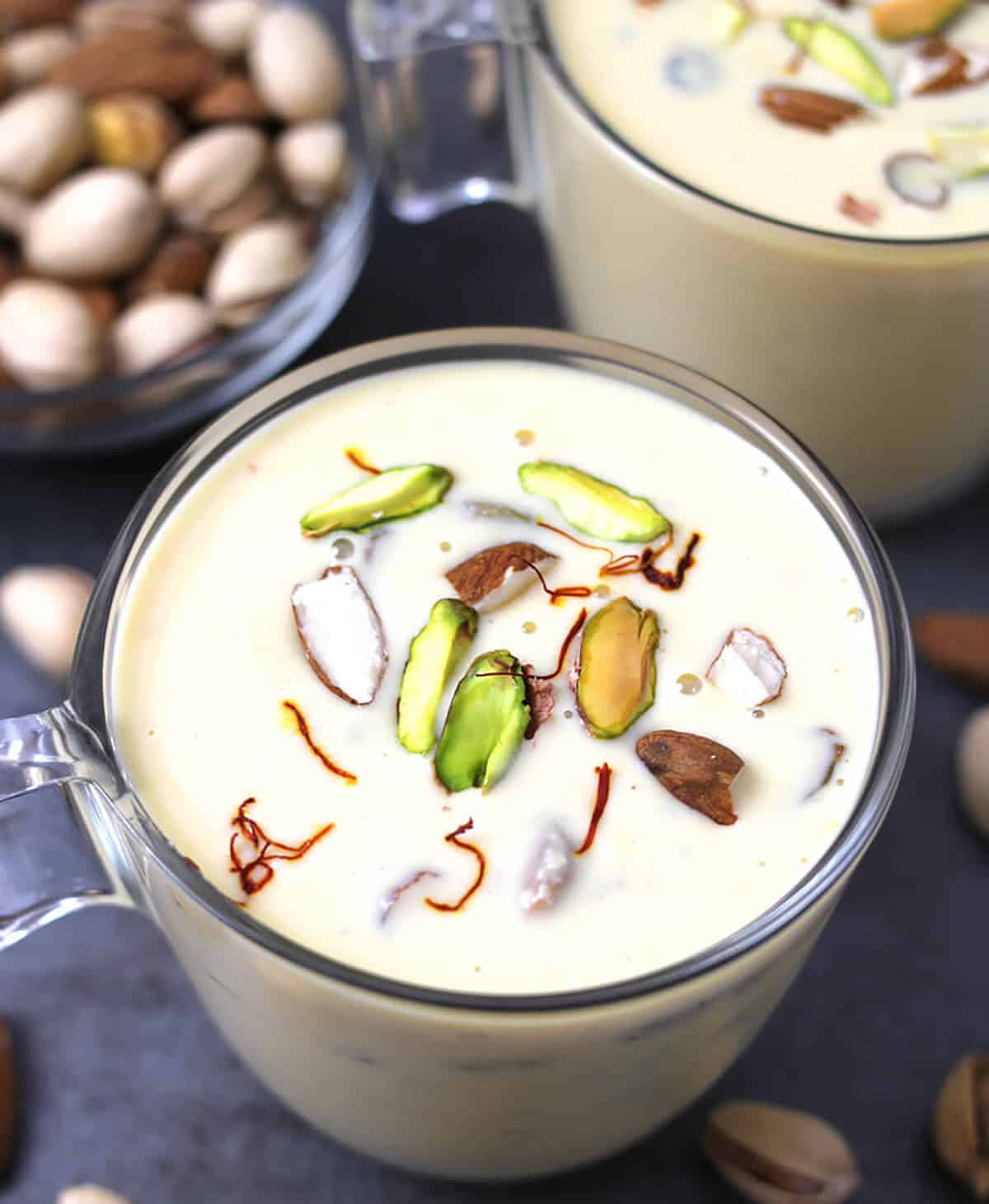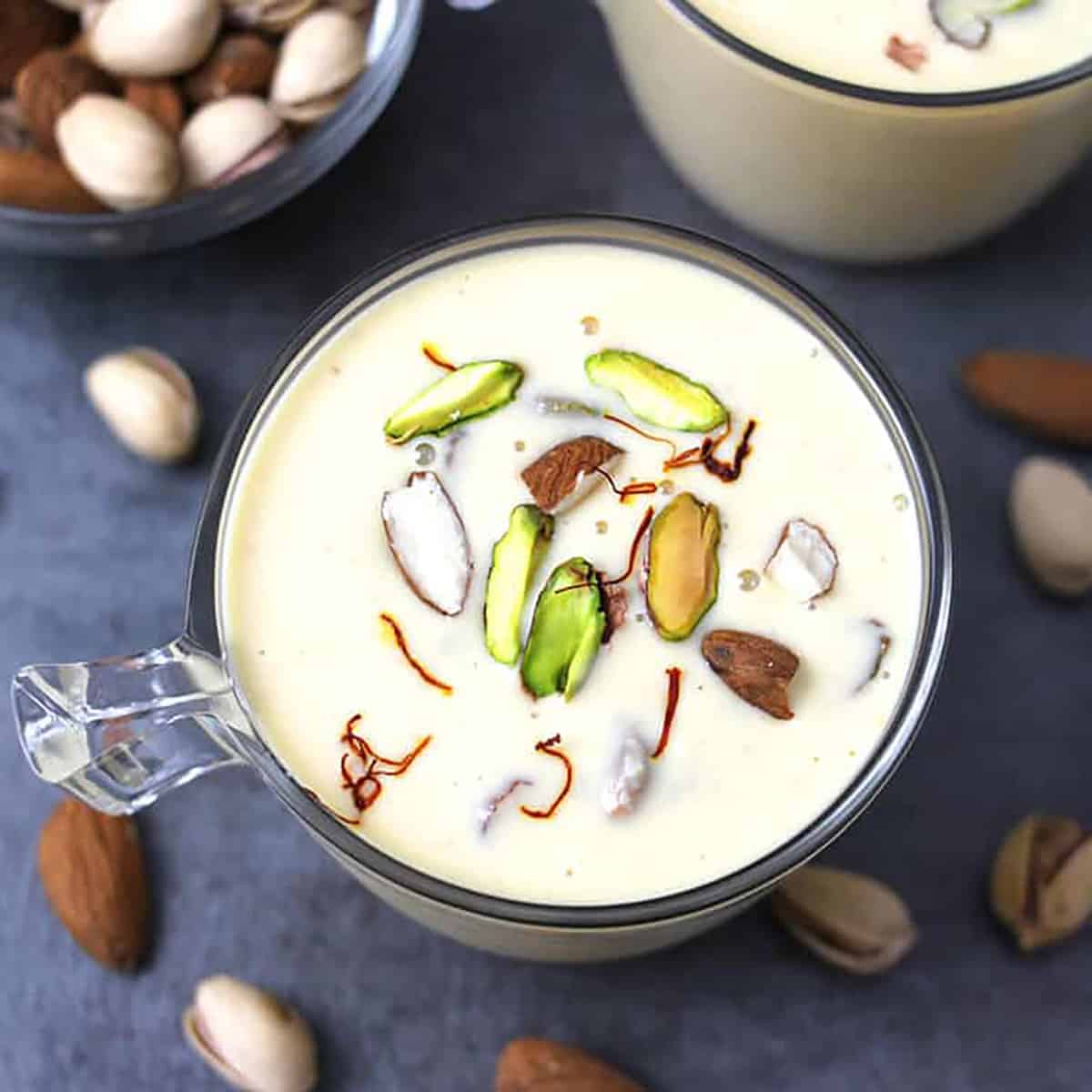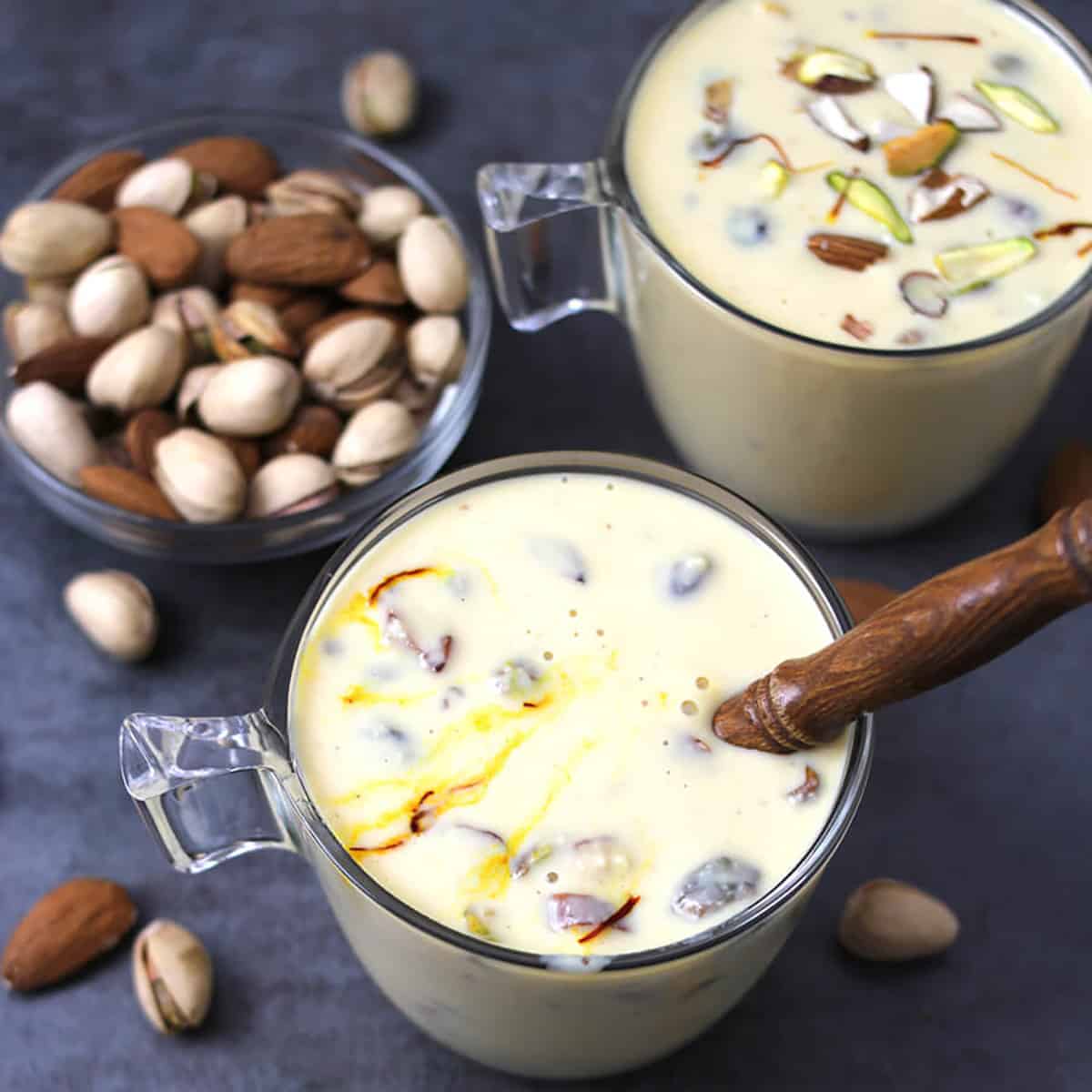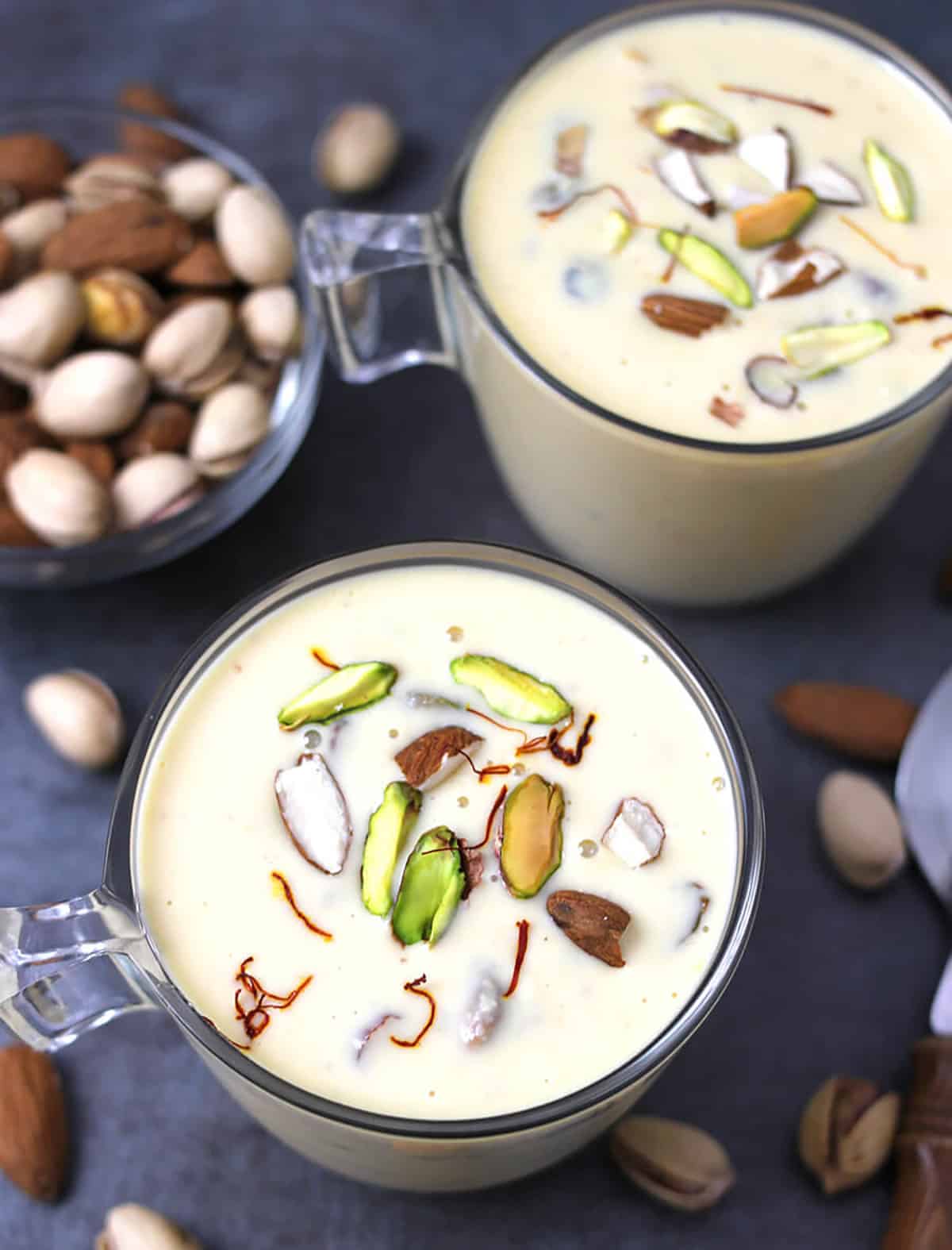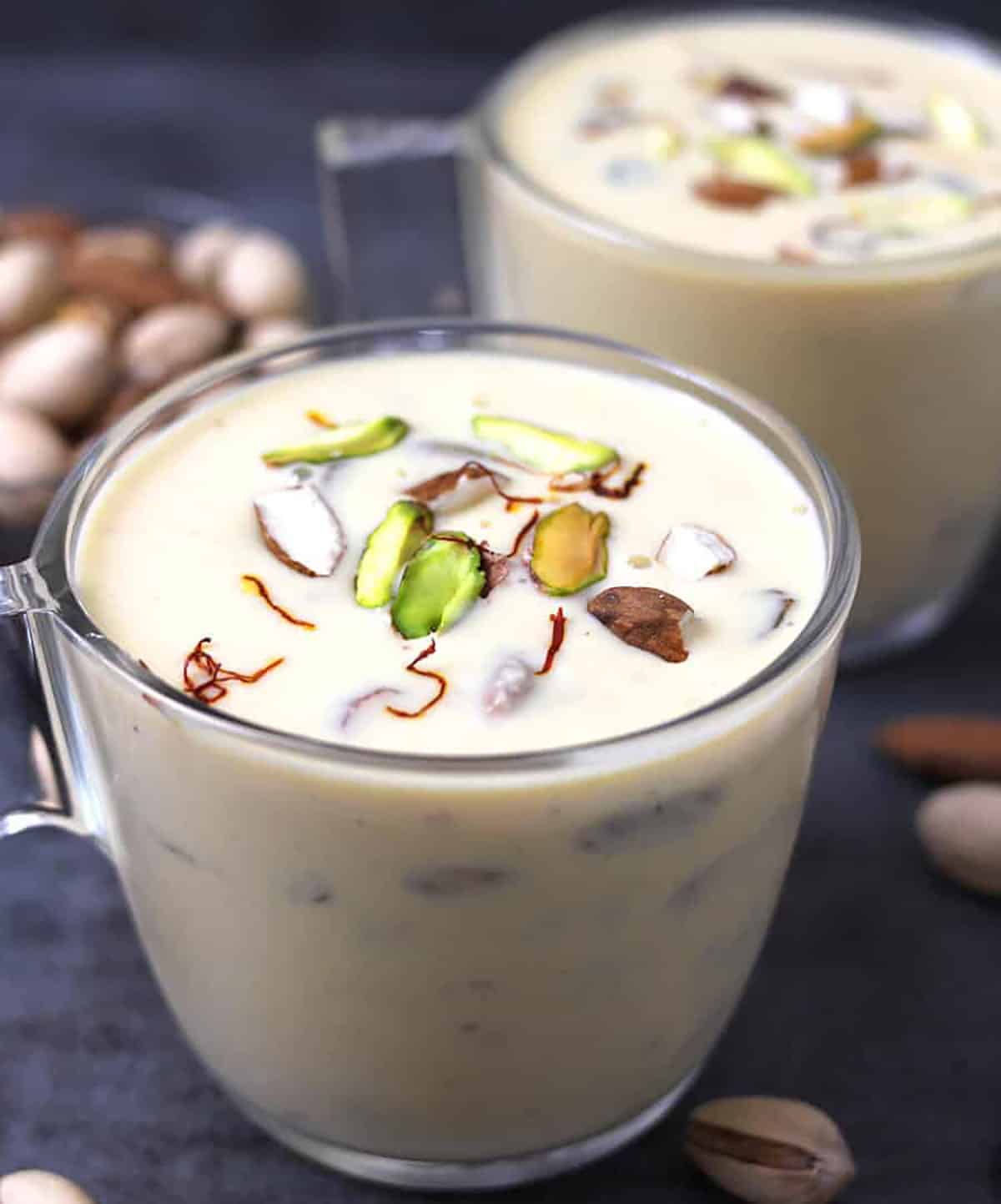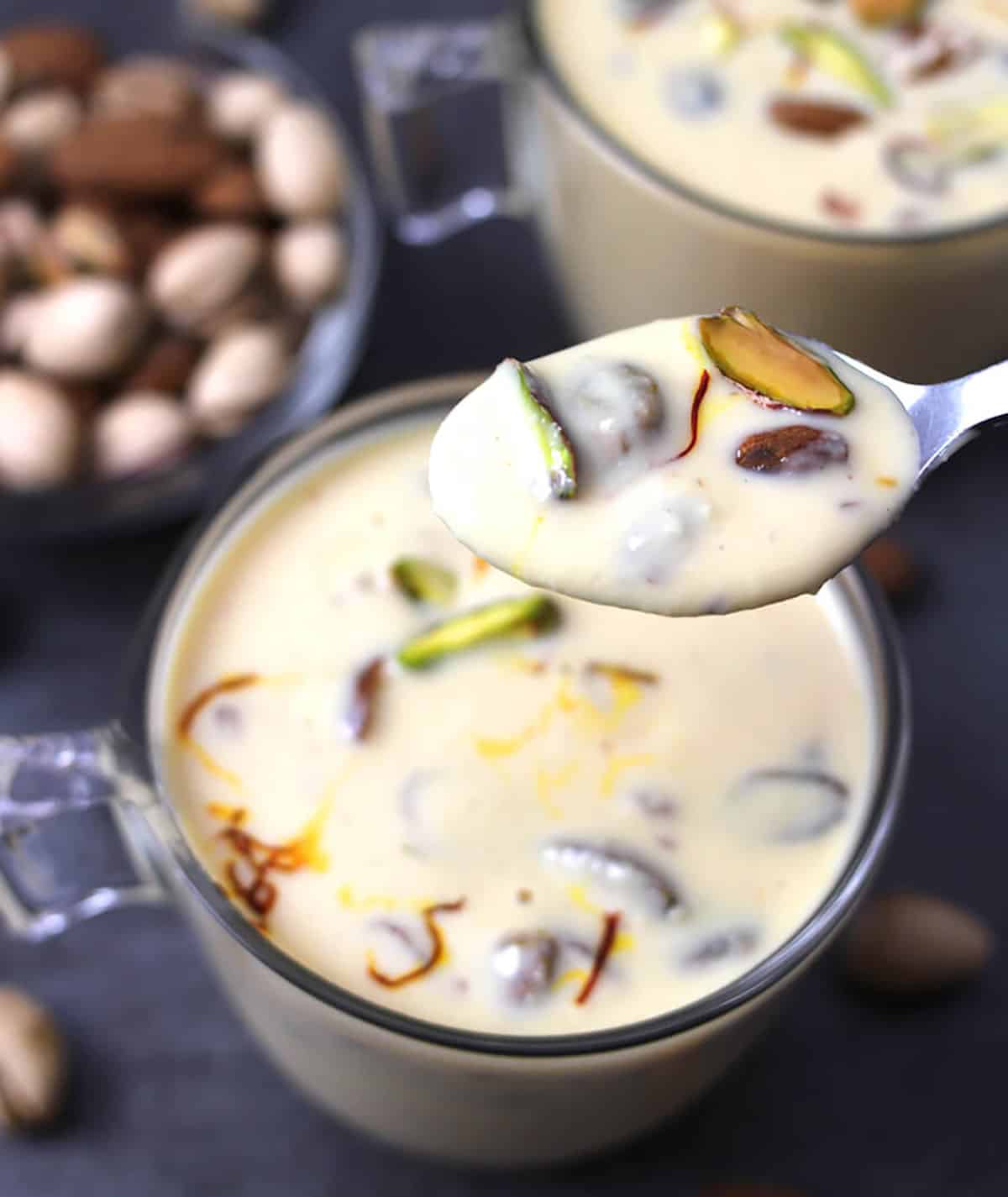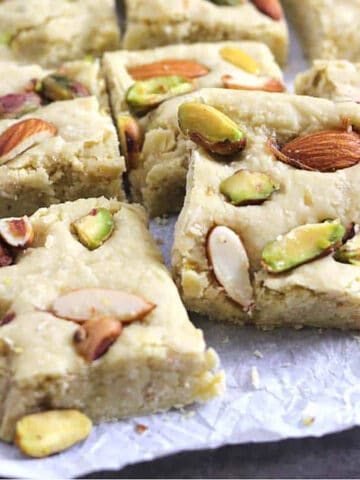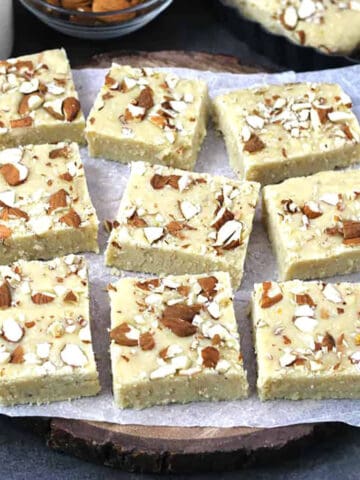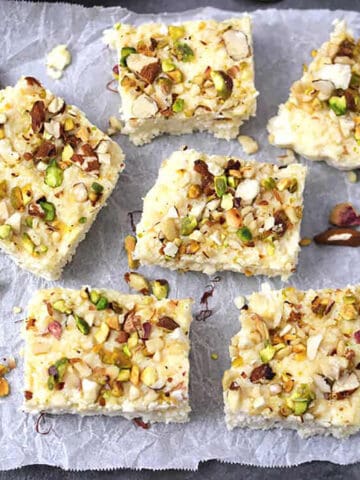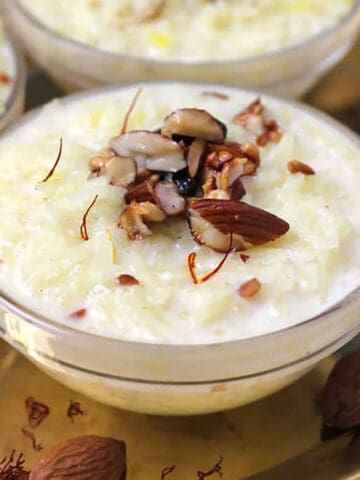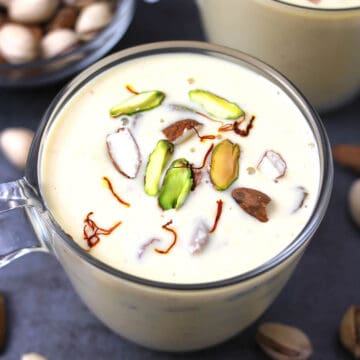Don’t miss to check out popular and traditional Indian sweets and desserts, the best Indian Diwali recipes.
What is Basundi?
Basundi is a traditional Indian milk-based sweet prepared by boiling milk on low heat until it is thickened and reduced to half. It is then flavored with cardamom, saffron and garnished with dry fruits and nuts. Heavy cream or condensed milk is used to speed up the process of thickening, as the traditional method takes longer than 1.5 hours sometimes. I have used condensed milk, and this instant and quick version is ready in less than 30 minutes. You can also check out my shortcut kalakand sweet and popular gajar ka halwa prepared using condensed milk. Basundi is very popular in Maharastra (Mumbai) and Gujarat, the western states and some south Indian states of India, and is very similar to a North Indian sweet called rabdi (rabri). This Indian sweet is made at Hindu festivals like kali chaudas, bhaubeej (bhai dooj), Diwali, and Navratri. I have added lots of dry fruits and nuts for crunchiness and kesar(saffron) for flavor in my dessert, and thus you can also call it kesar basundi or dry fruits basundi.
Different types of basundi
Fruit-based basundi: sitaphal (custard apple), seasonal mangoes, strawberries, apples or bananas for a fruity twist. Angoori basundi: small balls like rasgullas that will enhance the texture of the dessert.Chocolate basundi: Add melted chocolate or cocoa powder for a mild chocolate flavor. Rose basundi: Add rose water for a refreshing flavor. Coconut basundi: Add grated coconut or coconut milk for a nice tropical twist. Mawa basundi: To make it more richer or creameie khoya or mawa is added. Jaggery basundi: For a healthy and caramelized taste, sugar is substituted with jaggery. Paan basundi: Add betel elaves with gulkand for a paan flavor. Thandai basundi: A cold drink for holi by adding thandai powder. What is your favorite basundi flavor?
How do you serve Basundi?
Basundi dessert can be served warm, chilled, or hot. During the Bhai Dhooj festival, it is served with pooris or puris. During Diwali and Navratri, it is accompanied by other Indian sweets and mithai. Even though it is categorized as a dessert, you can serve it as a warm or chilled drink.
Ingredients
Sweetened condensed milk: As a sweetener and for a quick and instant basundi.Milk: Use full-fat milk for best result. Low-fat or skim milk will not give the desired thickness.Flavorings: Saffron, cardamom, and pinch of nutmeg.Dry fruits and nuts: For the crunchiness. See the recipe card below for a full list of ingredients and measurements.
Step-by-step instructions
In a heavy bottom pan, add condensed milk and whole milk and mix well. Start with 4 cups of milk. Depending on how sweet you like, you may add up to 5 to 5 ½ cups of milk. (Remember the mixture thickens on cooling) Bring this to a nice boil by stirring it occasionally so that it does not stick to the bottom and get burnt or browned. Reduce the flame to low and cook for 25 to 30 minutes or until it thickens and reduces by 25 percent. Keep stirring and scraping the sides of the pan during this process, and add any milk solids back to the mixture. Scraping is what gives basundi a thick and creamy texture. If you want it thicker, then simmer it for a longer time. Meanwhile, roast pistachios, almonds, and cashews in a pan until aromatic. Roasting is optional, but it gives additional flavor. Once the milk is thickened, add roasted nuts, raisins, saffron threads, cardamom powder, and nutmeg. Stir this and simmer for another 2 minutes. You can serve hot, warm, or cold. I recommend transferring this to a serving bowl and cooling completely. Refrigerate it for 2 hours at least before serving. The refrigeration will thicken this a little more. Garnish it with some more nuts and saffron, and enjoy.
Pro Tips
Vary the amount of dry fruits, nuts, cardamom, and saffron per your taste. You can add any dry fruits and nuts you love. My family loves it a little extra sweet, so I have used one can of sweetened condensed milk and 4 ½ cups of full-fat milk. The amount of milk in the recipe depends on how sweet you like. Use a flat laddle or spoon to stir and scrape the vessel. Keep scraping the sides of the vessel or pan and add it back during the cooking process, as this is the key that will make your basundi thick and creamy in texture. And prepare this sweet dish on medium to low flame so it does not burn at the bottom. Depending on how thick you like, you can simmer it longer. The mixture thickens further as you refrigerate. I have roasted the nuts (pistachios, almonds, and cashews) to get additional flavor. This is totally optional. For an authentic taste, add a pinch of nutmeg and tablespoon of chironji or charoli seeds if available.
Storage instructions
This milk-based dessert can be refrigerated for 2-3 days. To thin it down, you can add milk. Serve it chilled or warm. Basundi freezes well. Once it cools completely, add it to freezer safe conatiner and freeze for two months. Thaw overnight before serving.
More milk-based Indian desserts
Did you like this recipe? Please leave a star ⭐️⭐️⭐️⭐️⭐️ rating below and/or a review in the comments section. You can also stay in touch with us through social media by following us on Pinterest, Facebook, Instagram, and Twitter.
Recipe card
